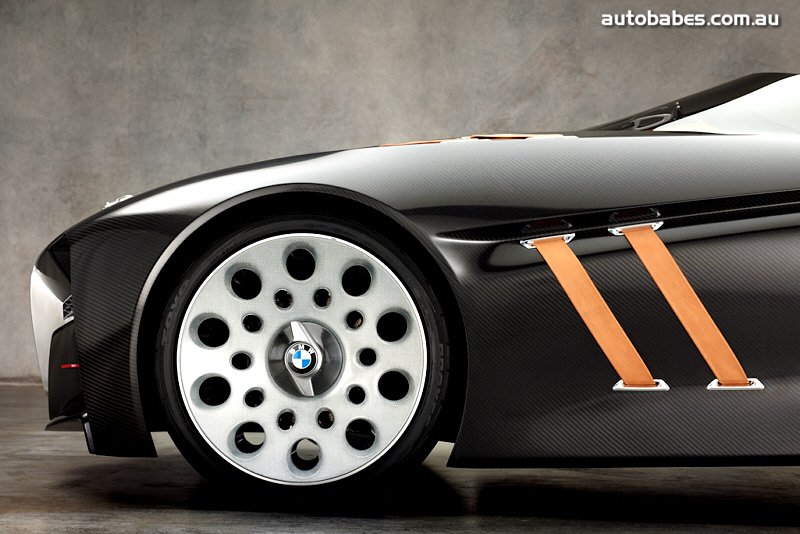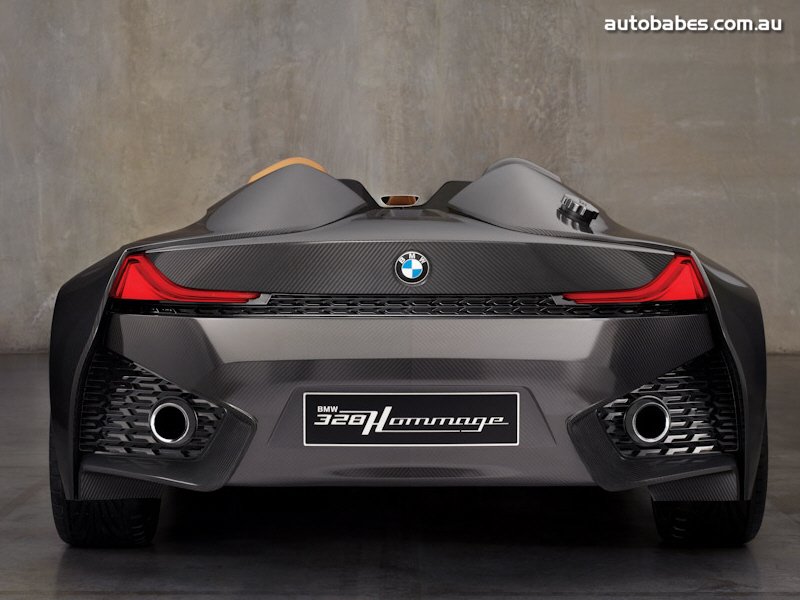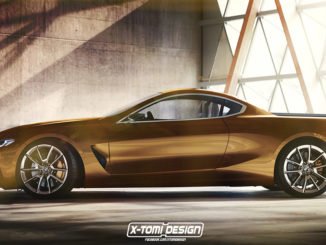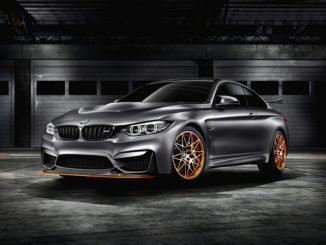|
The BMW 328 is considered the most successful and
best-looking sports car of the 1930s. The BMW 328’s success was the
result of its design parameters – through the use of systematic
lightweight construction, aerodynamic lines, optimum engine types and
outstanding suspension technology, it laid the foundation stone for a
new vehicle concept, by which performance only leads to success if
combined with perfect harmonisation of all parameters and maximum
efficiency. With these characteristics, the BMW 328 was even then the
embodiment of what the BMW brand still stands for today – dynamics,
aesthetics and a high level of innovation.
This year, the dream sports car is celebrating its 75th birthday. The
festivities will begin near Lake Como at the Mille Miglia. There, the
main focus will be on the fascination of the BMW 328 racing car. To this
day, the award-winning vehicle BMW 328 Touring Coupé still holds the
record for the highest average speed on the Mille Miglia circuit and, in
2010, was again able to win the historic revival of the race. A week
later at the Concorso d’Eleganza Villa d’Este, the two-seater’s
functional aesthetics will be the focus of attention. In this area of
conflict be-tween tradition and modernity, the BMW Group is paying
tribute to the BMW 328 on the occasion of its anniversary with a special
model – the BMW 328 Hommage. “With the BMW 328 Hommage, we wish to
pay homage to the passion and inventiveness of the fathers of the BMW
328”, explains Karl Bäumer, CEO of BMW Group Classic. “They
created an icon, which is considered a milestone in the history of the
automobile.” The BMW 328 Hommage translates the principles and the
character of the vehicle of that time into present times and offers a
possible interpretation of how the designers of that time, Fritz Fiedler
and Rudolf Schleicher, might have built the BMW 328 in the present day
using current technology.
The BMW 328 was also a special BMW insofar as the lightweight
construction principle was systematically implemented on a BMW
automobile for the very first time. Wherever possible, the lightest and
at the same time most robust materials were used, thereby keeping the
gross vehicle weight down to just 780 kilograms. In order to translate
the idea of lightweight construction into this day and age, major parts
of the exterior and interior of the BMW 328 Hommage are made of carbon
fibre reinforced plastic (CFRP). Whilst in the old days they favoured
the materials aluminium and magnesium, CFRP is now considered to offer
the best ratio between weight and stability. The high-strength fibre
fabric is lighter than aluminium, but also more stable. Wherever the
material has been used on the BMW 328 Hommage, it is also visible. In
this way, the BMW 328 Hommage not only reflects the lightweight
construction principle functionally, but also visually. The BMW Group
leads the way in the production and use of CFRP in automotive
construction and already possesses many years of experience in the
series production of CFRP roofs and structural components for the BMW M6
as well as CFRP roofs for the BMW M3.
Not only do the exterior and interior CFRP elements of the BMW 328 make
an exceptional statement. The up-to-date implementation of the original
vehicle character is also expressed in the choice of other materials
used on the inside and outside of the vehicle. Fine leather, matt and
high-gloss black polished alu-minium as well as the CFRP interior
visualise in the BMW 328 Hommage the pure and functional roadster
character of the sports car of that day. Inside the vehicle there are
also numerous details derived from motor racing, offering a hint of the
BMW 328’s most successful motor sports career. For instance, the
premiere of the vehicle in 1936 did not take place at a motor show, but
on the race-track. In its first race, the BMW 328 declassified the
entire higher-powered com-petition and dominated the racetracks of
Europe during the years that followed.
The expressive exterior design of the BMW 328 Hommage depicts the modern
interpretation of a highly emotional and dynamic two-seater Roadster –
just like the BMW 328 75 years ago. “Hommage cars have a long
tradition in the BMW Group. Based on our design philosophy “Rooted
in history, moving forward in design”, they demonstrate the
significance of history for the present. Even 75 years ago, the BMW 328
stood for sportiness and agility through light-weight construction. The
BMW 328 Hommage Car pays tribute to this past and shows how BMW
lightweight construction will develop. Carbon is the material of the
future.” (Adrian van Hooydonk) In keeping with its role model, the
BMW 328 Hommage has a streamlined design and is clearly recognisable as
a sports car. Precise lines run across all of the car body’s taut
surfaces. As a result, a subtle contrast between the tense surfaces and
the sharp edges is created within the flat, dynamic silhouette. The
strong wedge shape accelerates the ve-hicle even when it is at a
standstill, the scoops behind the seats take up the lines coming from
the bonnet, guiding them dynamically into the rear end. The struc-ture
of the CFRP mats gives the vehicle an appearance of depth, the diagonal
lines of the woven CFRP additionally underscoring the dynamic design
vocabulary of the roadster. Thanks to concise weaving, the carbon
structure is clearly visible, optically emphasising the lightweight
construction principle. Like the first BMW 328 test vehicles, with which
the model celebrated its triumphant debut on the racetrack in 1938, then
going on to gain a number of further successes, the BMW 328 Hommage has
no doors. Then as now, deep recesses allow access to the inside of the
car. The extremely wide and flat front end is strongly
three-dimensional, generous surfaces and concise lines give the front
end a powerful appearance. Viewed from the front, the CFRP bonnet
appears to en-compass the vehicle from above. It embraces the vehicle,
framing the slightly set back front end in a very distinctive downward
sweep. Due to the almost vertical, low-reaching sidewalls, it
simultaneously emphasises the BMW 328 Hommage’s excellent stability on
the road. As a result, the vehicle appears to be even flatter and more
dynamic as a whole. Under the bonnet, further surfaces rise to embed the
top and bottom of the distinctive kidney grille, whilst folding
themselves around it to shape the adjacent air intakes. Openings and
large air intakes create visual lightness at the front, simultaneously
demonstrating the high air requirement of the powerful three-litre,
six-cylinder engine. Three-dimensionally de-signed lattices inside the
front vents form a connection between the headlamps and the kidney
grille, with the three-dimensional lattice structure acting as an
accentuating feature.
The vertically positioned double kidney grille imitates the slim,
vertical kidney design of the early BMW models. In those days, the BMW
328 was one of the first BMWs to feature it, after which it became
further established with later BMW models. On the BMW 328 Hommage, the
vertically mounted kidney grille is dynamically incorporated into the
flat silhouette. It slants back roughly in the middle, thus blending in
with the bonnet and the dynamic silhouette when viewed from the side. On
the other hand, from the front it appears to be standing upright. The
kidney grille bars are more prominently curved than the kidney grille
surround itself. The vehicle displays the extremely round and appealing
design of the original BMW 328 kidney grille when viewed from the side.
The kidney grille surround is also distinctively three-dimensional,
appearing to continue in-side the vehicle. Its front surface is finished
in polished high-gloss, whilst the side surfaces have a matt finish.
This detail gives the kidney grille a very high-class and up-to-date
appearance. Behind the kidney grille bars, black horizontal fins
obstruct the view into the engine compartment – just like on the 328 of
75 years ago.
The rear end takes on the design vocabulary featured on the front of the
vehicle. Similar to the front end, sections of the sidewall form the
framework for the design elements that appear to protrude from the rear
end. Between them, located far to the outside, are two clearly and
concisely designed taillights sporting the characteristic BMW L shape.
Two filigree luminous elements reflect a strongly curved interpretation
of the typical BMW L shape, whilst a concisely constructed bar fitted to
the outside of the lamp is directed vertically downward, separating the
lamps towards the outside. The modern functional design of the
taillights underlines the technical appeal of the vehicle.
The powerful sculpturing of the rear end also visually conveys the BMW
328 Hommage’s lightness. Large vents and openings characterise the rear
end, giving it a light appearance. The distinctively horizontal section
below the taillights forms a counterpoint to the intense sculpturing,
emphasising the width of the vehicle. Below that, the rear of the car is
strongly arched, a concise line partitions the surface, thereby
providing an air of lightness. This large sculptural element adopts the
form language of the front-end design surrounding the kidney grille. The
wing-shaped element tapers both upward and downward, thus revealing two
large latticed air outlets. The circular tailpipes are located inside
these two openings. They protrude prominently out of the lattice and,
combined with the distinctively designed wing shape of the lower air
intake edges, underscore the power of the straight six-cylinder engine.
The interior design of the BMW 328 Hommage comprises a number of details
that are reminiscent of the successful motor racing history of the BMW
328. For example, the slightly asymmetrically designed windscreen has a
recess in the middle, similar to the windscreen design of earlier racing
cars. Simultaneously, it marks the areas in which the driver and
co-driver sit. Moreover, four wide leather straps run across the bonnet,
which appear to dive under the side shoulder surfaces to be continued on
the side. This detail, which used to be considered an extremely sporty
attribute, is also featured on the BMW 328 Hommage. Combined with the
high-gloss aluminium safety buckles, the leather straps provide a touch
of class in contrast to the very technical-looking carbon fibre. The
modern quick-release fasteners for securing the bonnet bring racing of
the past into the present. On the driver’s scoop a large silver
“75” as well as a small logo below it signify the reason for
the BMW 328 Hommage. Next to it, the integrated tank filler neck
protruding from the right-hand side is a striking detail. Whilst it
protrudes prominently from the body of the BMW 328, the BMW 328 Hommage
features a version that is integrated slightly more into the bodywork.
The large, prominently designed individual round headlights of the BMW
328 Hommage are reminiscent of the headlamps featured on the BMW 328,
which were integrated into the wings for the first time. The
three-dimensional interpretation of these round headlights is divided
into four trans-parent, cylindrical elements, these being back-lit by
LEDs. Between them, set-back black concave surfaces symbolise the
typical tape cross used on headlights in motor racing. Around the four
reflectors an illuminated ring emphasises the circular design of each
individual headlamp.
The two-part light alloy wheels featured on the BMW 328 Hommage are a
very special interpretation of the characteristic hole pattern of the
original rims. The extremely concave high-gloss black aluminium rim
boasts a contrasting silver-grey cover made of glass fibre. The insides
of the angular milled holes have a high-gloss finish and are
distinctively accentuated by a matt overlay. A black chrome butterfly
nut bearing the BMW emblem completes the contemporary version of the
wheel.
The interior of the BMW 328 Hommage visualises the functional passion
the BMW 328 exuded already back then. Thus the design of the interior is
also pure and functional today. The entire interior structure is made of
CFRP, conveying the lightweight construction concept of the BMW 328 into
the inside of the car both visually and functionally. Due to the special
application of materials, openings and freely suspended elements, the
surfaces and different levels create an all-embracing feeling of
lightness.
Through the use of CFRP inside the BMW 328, the “layering”
design principle, with which shapes take on clear functions, adopts a
completely new form of expression. Due to its exceptional
characteristics, CFRP is in itself robust and can be shaped into
self-supporting structures. Hence, only two large surface areas –
so-called layers – define the interior of the BMW 328 Hommage. Both of
them start at the bonnet and protrude into the interior. One of the
layers extends to-wards the driver, reveals the entire driver’s
workplace comprising steering wheel, control elements and scoop, thereby
separating the driver and co-driver areas from each other. This spatial
separation is indicated by a further material: the elegant, brown
leather interior extends from the entrance across the driver’s area,
over the seats to the scoop, thus becoming an integral part of the
design vocabulary of the first layer. At the same time, the surrounding
graphics comprising material and geometry create a link with the
co-driver. On the driver’s scoop, a silver-coloured logo bearing the
number 75 also gives indication inside the car of the festive occasion
in honour of the BMW 328 Hommage.
The second layer begins next to the scoop, making a sweep towards the
co-driver, then to float freely in front of him. This gesture creates a
sporty but light sense of spaciousness, opening out a functional area in
front of the co-driver. Between the driver and co-driver a multitude of
recesses in the instrument panel and centre console create an airy and
harmonious spatial experience, bringing the driver and the co-driver
slightly closer to each other again in a sweeping gesture. The lines of
the woven carbon fibres complement the interior design vocabulary
perfectly.
Viewed from above, a slightly asymmetrical design of the bonnet and
windscreen underscores the driver-orientated construction of the BMW 328
Hommage. The windscreen is larger within the driver’s area, so the lines
of the powerdome are of different length. Behind the windscreen they
continue in the inside of the car, so that at this point both the
interior and the exterior appear to be intertwined.
Apart from CFRP, leather and aluminium, the interior deliberately
features very few other materials. But every material that has been used
is also visible. This provides the BMW 328 with a special authenticity.
The contrast between the cool and technical-looking carbon fibre and the
high-quality, warm brown of the leather characterises the interior. The
exceptionally soft saddle tan leather has a fine grain and a slightly
antique finish. On the seats the high-quality seam pattern enhances the
appearance of the leather-covered seats even further. The seams in the
centre of the sitting area of the seats and the silver-grey
double-felled outer seams are a modern interpretation of the sports
seats featured in earlier models, giving the seats additional character
and depth. Aluminium is only seldom featured and, depending on where it
is used, has a high-gloss or a matt satin finish.
The instruments featured in the BMW 328 Hommage are both sporty and
functional to an equal extent. The sparse instrument panel is dominated
by the only round instrument – the prominently designed rev counter.
Like the cockpit of the BMW 328 and typical of a sports car, the
instrument cluster indicates in addition to engine speed only the oil
temperature, oil pressure and water temperature. To the right of the rev
counter, control lamps and a gearshift point indicator complete the
instrument cluster. The instrument surrounds are finished in black
chrome and made to the highest standards.
________________________________________________
General
specifications |
| Country |
Germany
by Adrian van Hooydonk for BMW |
Produced
in |
2011 |
|
|
| Engine |
| Configuration |
Straight
6 |
| Mount |
Front,
longitudinally mounted |
| Displacement |
3
liter / 183.1 cu in |
|
|
|
|
|
|
|
|
________________________________________________
This
is article has been an excerpt from Edition 38 – The Cleopatra Edition.
Be
sure to download the entire edition to see the full high res version of
the pics and the article.
Plus
our gorgeous girls !
All
Editons are FREE after registration.
Click Here Now :- https://autobabes.com.au/content/i-Mag/index.php?page=-Ed38

|
________________

________________

________________

________________

________________

________________

________________

________________

________________ |















Be the first to comment